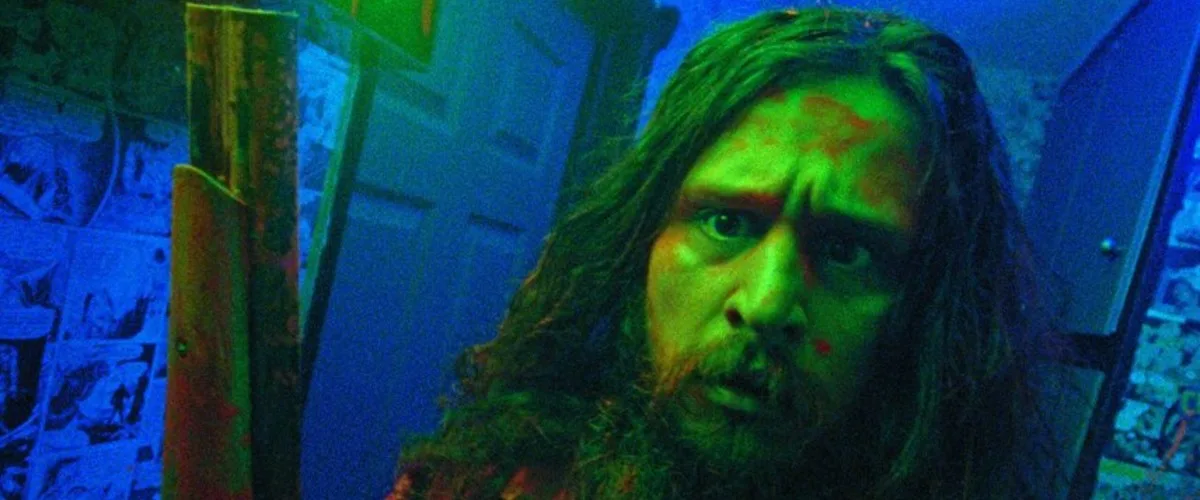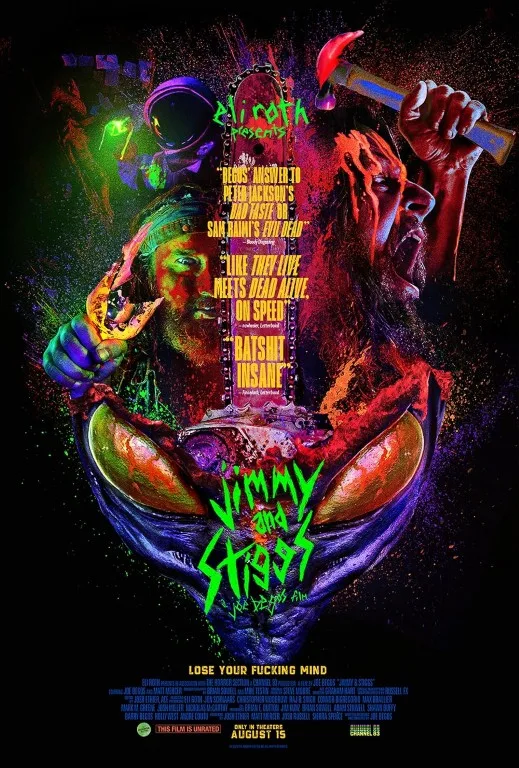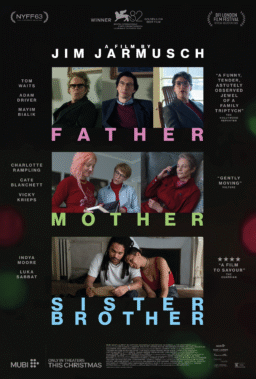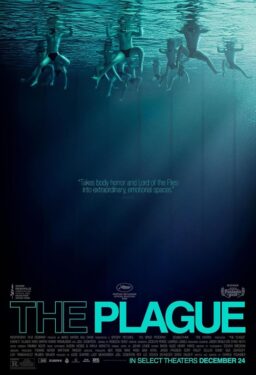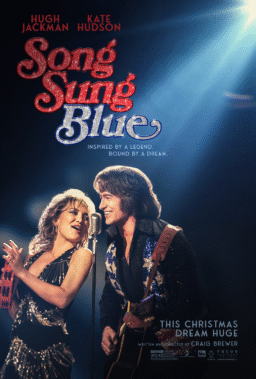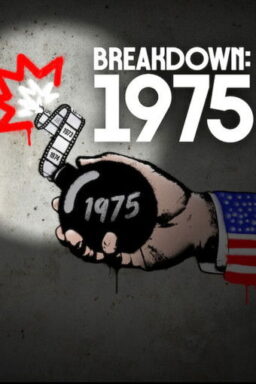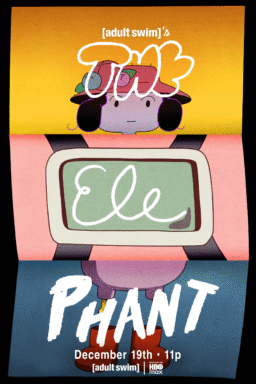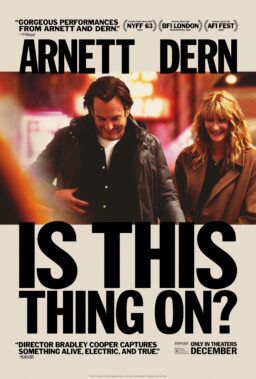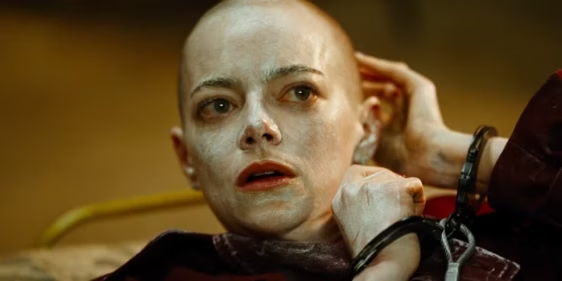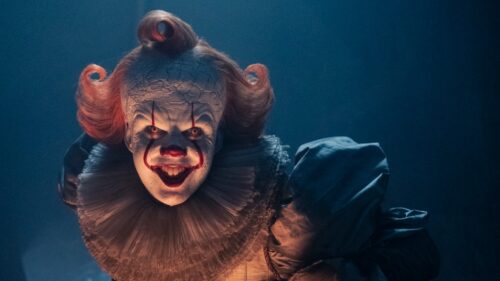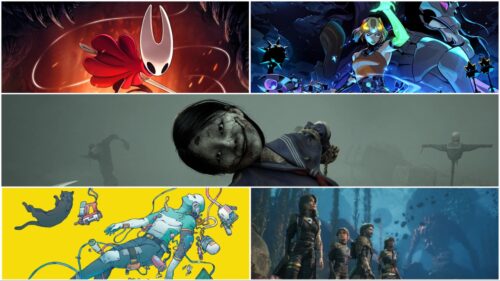The claustrophobic alien/home invasion thriller “Jimmy & Stiggs” takes place in a single location, the apartment of out-of-work director Jimmy Lang, played by the movie’s writer/director Joe Begos. In interviews, Begos (“Christmas Bloody Christmas”, “The Mind’s Eye”) has said that he developed his latest release over the course of four years, so it’s easy to imagine that there’s a personal element to his meta-reflexive on-camera role. Jimmy’s also loaded throughout the movie and on a heavy-duty mix of drugs—especially pot and cocaine—and alcohol, so that also helps to set viewers’ expectations.
We soon learn that Jimmy’s substance abuse problems are the source of tension between him and his old buddy Stiggs Randolph (Matt Mercer), with whom he hasn’t spoken in months. In a phone call during an early scene, Jimmy’s agent tells him that reuniting with Stiggs is his best shot at reviving his career. Unfortunately, Stiggs won’t answer Jimmy’s call. Jimmy also has a more pressing need for Stiggs: who else but his old buddy and former colleague of 20 years would believe that extraterrestrials have been messing with Jimmy?
Stiggs eventually answers Jimmy’s call, but only after we see Jimmy launch himself into a drug-fueled paranoid spiral filled with formula-friendly guidelines and rules about alien abductions, including warnings about throbbing jawlines and missing time, as well as the convenient theory that drinking helps to ward off alien influences. Jimmy really likes that last piece of advice, as you might imagine.
Drinking’s the only way that Jimmy can keep his feet on the ground since the aliens seem to have no trouble otherwise kidnapping him and manipulating his body without his knowledge. That’s how it seems to Jimmy, whose tenuous grasp on reality sometimes comes across in visually monotonous long takes filmed from his point of view. Now Stiggs must decide how far he wants to stick by Jimmy.
“Jimmy & Stiggs” likewise paints viewers into a corner and asks us to sink deeper with its title characters. Begos’s abrasive style is an acquired and acquirable taste that brings to mind down-in-the-muck sleazy touchstones like “Street Trash”, as well as Rob Zombie’s day-glo blacklight color palette and the giddy tastelessness of Peter Jackson’s early horror-comedies, especially “Bad Taste” and “Dead Alive.” The “Cannibal Holocaust” poster on Jimmy’s wall seems to announce the movie’s aim of grossing you out, pushing all your buttons, and then leaving you feeling exhausted and exhilarated. The rest of the movie struggles to achieve a mood for long before it gets bogged in so many four-letter words and goopy, low-budget practical effects.
Shot on 16mm film and lit in bubblegum pinks and cerulean blues, “Jimmy & Stiggs” is neither a strictly faithful throwback nor a quick and dirty genre pastiche that coasts on its technical polish, even though Begos has obviously progressed as a filmmaker. It’s still hard to appreciate the movie, even as an overwhelming genre exercise, given how often Begos gets in the way of his characters and his audience.
To be fair, Begos’s restless attention to keeping things moving (and with a naturalistic integrity of its own) is sometimes impressive. And some of the movie’s bratty humor lands by sheer force of perseverance, like when Jimmy headbutts an alien with an oversized head and then the alien head-butts him right back. The ensuing brawl is also filmed with energy and attention to rhythm and pacing, which makes it more dynamic than a number of the action scenes in Begos’s earlier movies.
It’s still hard to care about what happens to Jimmy or Stiggs when so much of the action looks visually indistinct thanks to the stroboscopic, neon puke color palette and lighting schemes. The characters’ non-stop cursing comes across as desperate to displease since every other line of dialogue is doused with one or more “f***”s. Imagine a hot sauce where the main appeal isn’t the taste, but the punishing extremity of its hot-ness. Acquired tastes are funny like that.
Viewers are rarely encouraged to delve too far or too deeply into Begos’s surface-deep, mucky aesthetic. There is, however, a couple of plot twists and a few gnarly practical-effects sequences, most of which involve the violent destruction and dismemberment of goofy-looking E.T.s. So yes, this confrontationally disjointed movie does basically deliver what its creators promise.
As a lover of bad vibes cinema—I get it. “Jimmy & Stiggs” is a slick wallow into a cranked-up, self-destructive headspace that frequently over-compensates for what it lacks in plot and character development with sheer vigor and volume alone. I understand! (and like that The Body song, too) There are flashes of personality throughout, but they often spill off the screen as Begos rushes us along to the next big pile-on of nerve-testing effects. The film certainly does what it does, but still doesn’t satisfy beyond its well-advertised selling points.

